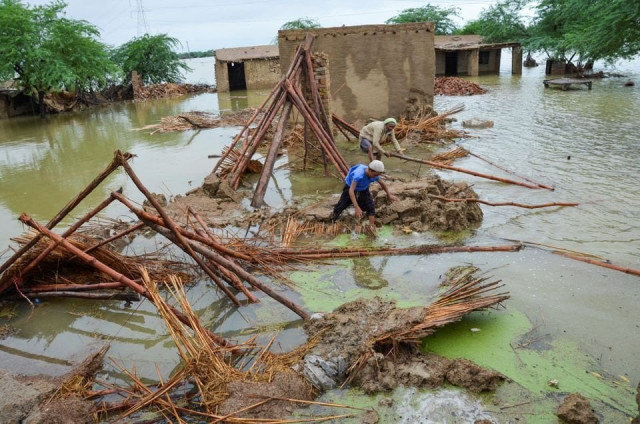Recent floods, rains pose 'serious' threat to wildlife in Pakistan
Country has lost several species in recent past and is 'about to lose others,' warns World Wide Fund for Nature

Recent super floods and torrential rains combined with drought and wildfires across Pakistan have posed a "serious" threat to already under-pressure wildlife in the country.
On the occasion of World Wildlife Conservation Day observed on Sunday, the World Wide Fund for Nature (WWF) in a report said the recent climatic events such as floods and widespread rains coupled with drought and wildfires have damaged the wildlife habitats and posed a serious threat to the wild species in Pakistan.
The theme of the day for this year is “recovering key species for ecosystem restoration.”
In addition to climate change, the report added, a string of other factors, including illegal wildlife trade and hunting, human-wildlife conflict, unsustainable development, habitat loss and encroachment, and water pollution are also contributing to a gradual decline in wildlife.
Enumerating the damages caused by the successive climatic events, including loss of habitat, dwindling food availability, and migration, the report cautioned that these factors are likely to lead to the disappearance of various wild species in the country.
Read more: Balochistan in grip of financial crisis
“We need to assess the adverse impacts of climate change on threatened animals, including resident and migratory birds, marine and freshwater dolphins, snow and common leopards, smooth-coated otters, and pangolins, among others,” it maintained.
Rab Nawaz, senior director of biodiversity at WWF-Pakistan, in his remarks, regretted that despite several initiatives to save biodiversity, the country has lost several species in the recent past and is "about to lose others."
Not many people will realise that animals such as the gharial, despite being seen as recently as 1985, are probably lost now, he added.
This crocodile, harmless to man, was hunted to extinction due to its perceived threat to fish stocks.
Its population in neighbouring countries, he went on to say, also faced similar threats but awareness campaigns and re-introduction schemes have seen the successful return of this strange-looking animal back into the water bodies.
Conservation successes
Pakistan is home to rare, unique, and iconic wildlife species such as the snow leopard, markhor, brown bear, Indus River dolphin, freshwater turtles, and many others.
In spite of the challenges, according to the WWF, there are a few conservation success stories in Pakistan’s context, where community-led and coordinated conservation efforts have helped enhance the population of several endangered wildlife species and their habitats.
As a result of the continued efforts of the Sindh Wildlife Department, WWF-Pakistan, and local fisher communities, the population of the Indus River dolphin, an endemic and endangered species of river cetacean, has almost doubled in the past two decades.
The otherwise decreasing population of markhor – the country's national animal – has also rebounded from the 1980s.
Although markhors are restricted to the national parks and community-managed reserves, they are nonetheless viable populations, and all the sub-species are doing well, added Nawaz.



















COMMENTS
Comments are moderated and generally will be posted if they are on-topic and not abusive.
For more information, please see our Comments FAQ